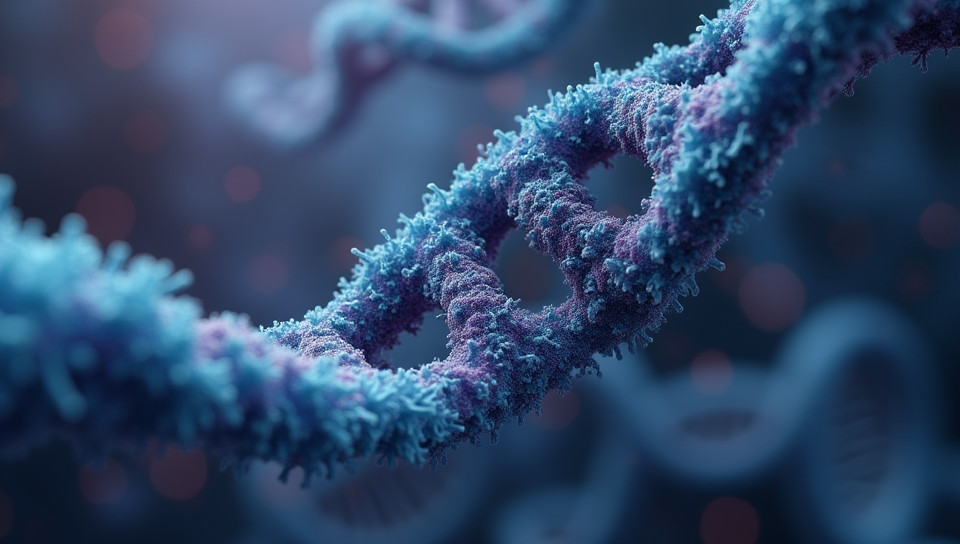Gene editing with CRISPR can correct inherited genetic mutations 78%

Correcting the Course of Genetics: The Power of CRISPR Gene Editing
Imagine being able to edit your genetic code, erasing inherited mutations that have plagued families for generations. A seemingly science-fiction concept has become a reality thanks to the advent of gene editing technology. CRISPR (Clustered Regularly Interspaced Short Palindromic Repeats) has revolutionized the field of genetics by providing a precise and efficient way to edit DNA sequences. In this article, we'll delve into the world of CRISPR and explore how it can correct inherited genetic mutations.
The Problem with Inherited Genetic Mutations
Inherited genetic mutations are a major cause of various diseases and disorders, affecting millions of people worldwide. These mutations occur when there is an error in the replication of DNA during cell division, resulting in a change to the genetic code that can be passed down through generations. Some examples of inherited genetic disorders include cystic fibrosis, sickle cell anemia, and Huntington's disease.
How CRISPR Gene Editing Works
CRISPR gene editing is based on a bacterial defense mechanism that recognizes and cuts specific DNA sequences. This process involves two main components: a guide RNA (gRNA) that targets the desired location in the genome, and an enzyme called Cas9 that acts as a molecular scissor to cut the DNA. Once the DNA is cut, the cell's natural repair machinery is triggered, allowing researchers to insert new genetic material or correct existing mutations.
The Benefits of CRISPR Gene Editing
The use of CRISPR gene editing offers several benefits, including:
- Precision: CRISPR allows for precise targeting of specific genes and locations within the genome.
- Efficiency: The technology is highly efficient, enabling rapid correction of genetic mutations in a matter of weeks or months.
- Scalability: CRISPR can be used to edit genes in various cell types, from somatic cells to germline cells.
Correcting Inherited Genetic Mutations with CRISPR
The potential applications of CRISPR gene editing are vast and varied. By using this technology to correct inherited genetic mutations, researchers hope to provide new treatments and even cures for previously incurable diseases. Some examples of inherited genetic disorders that can be treated with CRISPR include:
- Sickle cell anemia: A mutation in the HBB gene causes sickle-shaped red blood cells that can lead to various complications.
- Cystic fibrosis: A mutation in the CFTR gene affects the production and function of mucus, leading to respiratory and digestive issues.
Conclusion
Gene editing with CRISPR has opened up new possibilities for treating inherited genetic mutations. This technology offers a precise and efficient way to correct errors in the genetic code, providing hope for families affected by these disorders. While there are still challenges to overcome before CRISPR can be widely used as a therapeutic tool, the potential benefits of this technology make it an exciting area of research with significant implications for human health.
- Created by: Ömer Asaf Özkan
- Created at: Jan. 13, 2025, 5:20 p.m.
- ID: 17798

